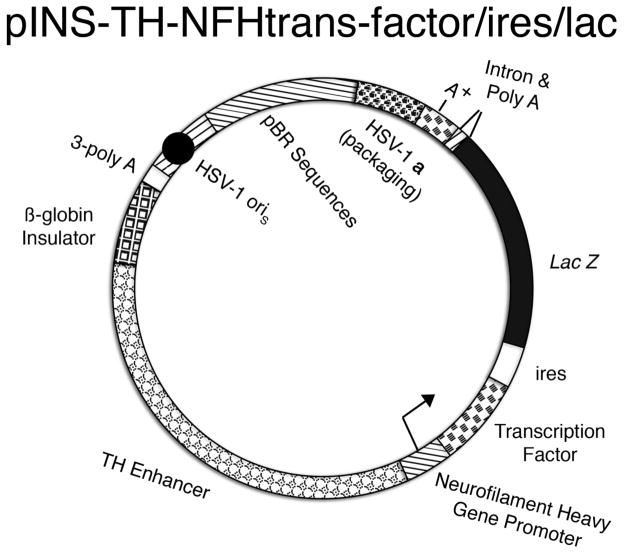Fig. 1.
Schematic diagram of pINS-TH-NFHtrans-factor/ires/lac. The promoter contains the chicken ß-globin INS (block segment), an upstream enhancer from the rat TH promoter (alternating circle segment), and the mouse NFH promoter (diagonal line segment with arrow). The INS-TH-NFH promoter expresses a transcription factor (brick segment), an ires (clear segment), and the Lac Z gene (black segment), followed by the second intron from the mouse α-globin gene (triangle), and the SV40 polyadenylation signal (diagonal line and brick segments, respectively). A cassette of three polyadenylation sites (3-poly A, clear segment) was placed 5’ to the INS-TH-NFH promoter to reduce any effects on expression from the HSV-1 IE 4/5 promoter (diagonal line segment). The HSV-1 origin of DNA replication, small (oriS, black circle in diagonal line segment) and the HSV-1 a sequence, which contains the packaging site (clover segment), support the replication and packaging of the vector into HSV-1 particles, respectively. Sequences from pBR322 (horizontal line segment) enable propagation of the vector in E. coli.

